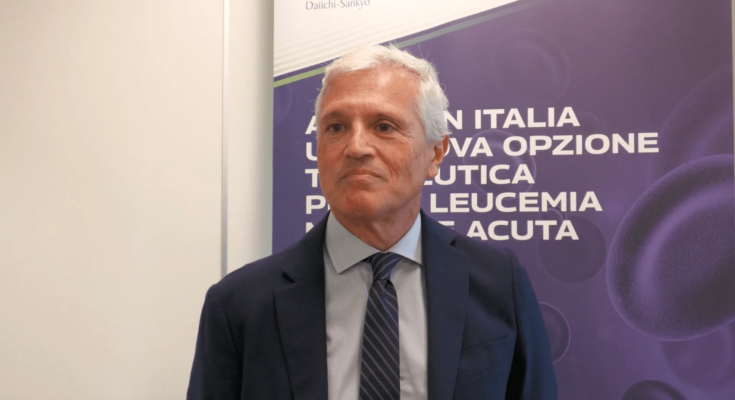“Quizartinib enriches our therapeutic arsenal and fills the gaps we have had to date in the maintenance phase.” These are the words of Adriano Venditti, director of Hematology at the Tor Vergata Polyclinic Foundation in Rome, speaking at a media conference organized in Milan by Daiichi Sankyo Italy on the occasion of the recent green light for quizartinib replacement, a new therapeutic option for newly diagnosed Flt3-Itd positive AML acute myelogenous leukemia.
“Quizartinib has the disruptive characteristics of a well-known mutation in acute myeloid leukemia, the Flt3 mutation, which is present in approximately 25% of cases – continues Venditti – Patients with this mutation, who are able to tolerate intensive chemotherapy, can receive a combination with quizartinib, administered during the induction phase, in consolidation cycles and in the maintenance phase, for which it is approved, for a duration of 36 cycles (i.e. 3 years) both in patients who completed their therapeutic course without undergoing stem cell transplantation and in patients who, instead, received a transplant”.
In the phase 3 study Quantum-First, which analyzed the effect of the drug in combination with standard induction chemotherapy based on cytarabine-anthracycline and with standard consolidation chemotherapy based on cytarabine, followed by maintenance therapy with monotherapy based on quizartinib “gave important results, which then led to approval”, said Venditti, referring to a 22% reduction in the risk of death compared with standard chemotherapy alone detected by the trial.



